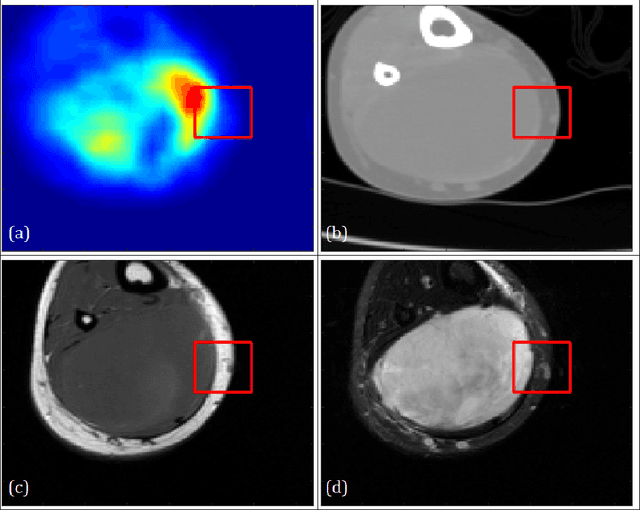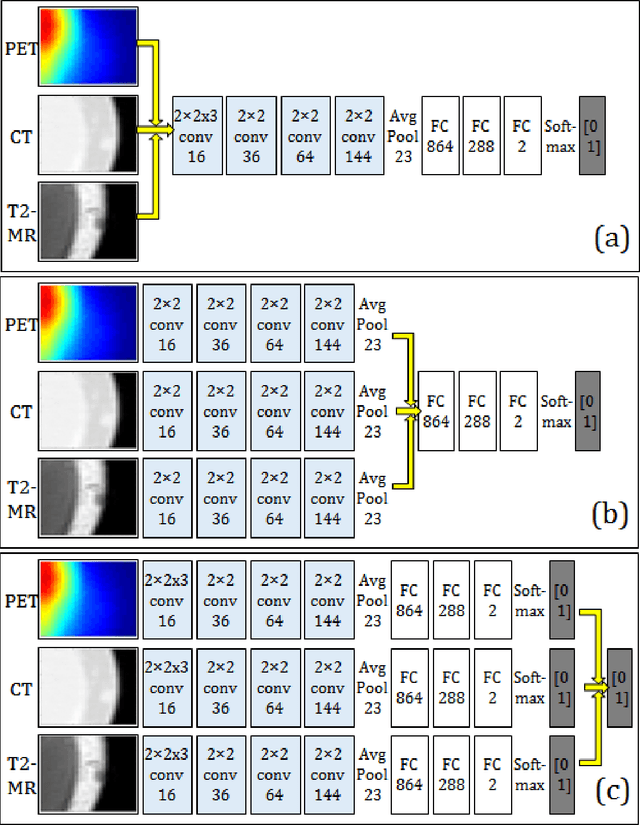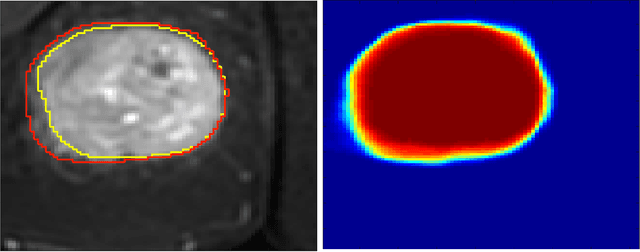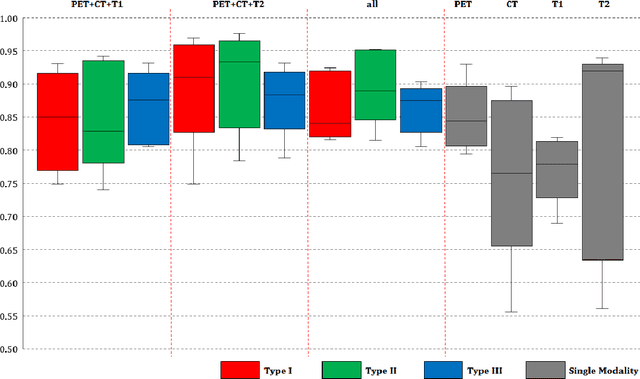Medical Image Segmentation Based on Multi-Modal Convolutional Neural Network: Study on Image Fusion Schemes
Paper and Code
Nov 02, 2017



Image analysis using more than one modality (i.e. multi-modal) has been increasingly applied in the field of biomedical imaging. One of the challenges in performing the multimodal analysis is that there exist multiple schemes for fusing the information from different modalities, where such schemes are application-dependent and lack a unified framework to guide their designs. In this work we firstly propose a conceptual architecture for the image fusion schemes in supervised biomedical image analysis: fusing at the feature level, fusing at the classifier level, and fusing at the decision-making level. Further, motivated by the recent success in applying deep learning for natural image analysis, we implement the three image fusion schemes above based on the Convolutional Neural Network (CNN) with varied structures, and combined into a single framework. The proposed image segmentation framework is capable of analyzing the multi-modality images using different fusing schemes simultaneously. The framework is applied to detect the presence of soft tissue sarcoma from the combination of Magnetic Resonance Imaging (MRI), Computed Tomography (CT) and Positron Emission Tomography (PET) images. It is found from the results that while all the fusion schemes outperform the single-modality schemes, fusing at the feature level can generally achieve the best performance in terms of both accuracy and computational cost, but also suffers from the decreased robustness in the presence of large errors in any image modalities.
 Add to Chrome
Add to Chrome Add to Firefox
Add to Firefox Add to Edge
Add to Edge